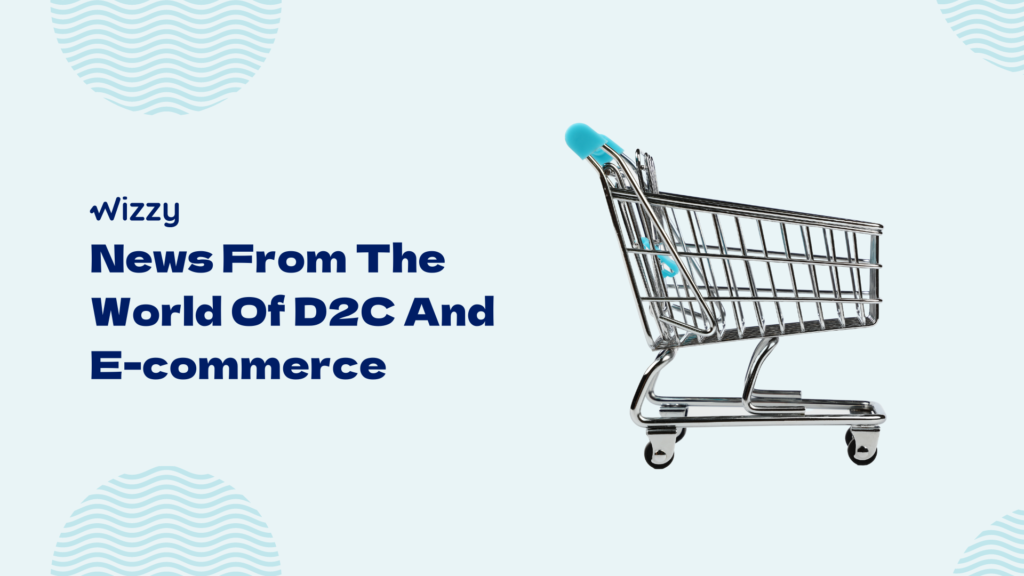Week In Review From The World Of D2C And E-commerce – 18 JUNE 2022
Written by Alok Patel

In this week’s round up of D2C news from around the world, we bring you updates on Walmart and Roku’s partnership to bring e-commerce to TVs, India’s attempt to level the e-commerce playing field for small brands, and more.
Walmart And Roku Launch E-commerce On TVs – TV Technology
Remember Telebrands TV ads where people demonstrated products and we could ring a number to buy the products? Tele-e-commerce is making a comeback of sorts.
Moving beyond the social media apps, the next frontier Walmart is trying to conquer is tele-e-commerce in partnership with Roku.
This partnership hopes to make connected TVs the next big e-commerce shopping destination.
As part of the effort, consumers will be able to purchase featured products from shoppable ads on Roku’s streaming platform and have them fulfilled by Walmart.
How much sales will this partnership drive? How could this help Roku? Read this article.
Here’s E-commerce’s Second Boom – Times Of India
E-commerce in India has seen a 25% increase in 2022, with sales about to reach $80bn and are likely to double by 2025 while crossing the $100bn mark in 2023.
With such a significant shopping appetite, brands are changing the way they reach consumers and leverage the second e-commerce boom.
From delivering products sooner, going direct (D2C), tapping into the Metaverse, retail brands are trying their best to reach consumers and drive more sales.
Read this article to learn more about the second e-commerce boom and how brands are trying to leverage this boom.
Levelling The E-commerce Playing Field With ONDC – CXOToday
After successfully launching the United Payment Interface (UPI), India has showcased its might in building software infrastructure. Now the government is planning to disrupt the e-commerce industry with ONDC – Open Network of Digital Commerce.
While we wrote a teaser piece on ONDC in our last week’s D2C newsletter, today we are looking at this article from CXOToday where they present a detailed case study of how ONDC came about and what is in store in the coming days and months.
The CXOToday article talks about the influence of super apps (made popular in China), and how the Ministry of Commerce approached an organisation to draw India’s e-commerce protocols where retailers of all sizes (especially small and medium scale brands) can come together to sell products on one platform and compete with marketplace unicorns like Flipkart and Amazon. Read the article to learn more.
India’s E-commerce Consumers Will Outnumber The Population Of The US – Business Insider
India is expected to have more e-commerce users by 2025 than the total population of the US, according to a new report. Further, 7 out of every 10 internet users are likely to complete an online transaction in the same period.
According to a report by WPP’s GroupM and Wunderman Thompson, in collaboration with Amazon Ads, the Indian e-commerce sector is expected to grow at a compound annual growth rate (CAGR) of 23% to reach half a billion by the end of this decade.
Read this article to learn more about India’s e-commerce potential.
Delhivery Preps To Deliver Products The Same Day – YourStory
With a growing appetite for purchasing products online, India has seen a remarkable growth in e-commerce adoption in 2022. Consumers not only find buying products online, they prefer them delivered faster, preferably the same day.
One of India’s biggest e-commerce logistics enablers Delhivery has announced the launch of “guaranteed” Same Day Delivery (SDD) across 15 key cities to target direct-to-consumer (D2C) brands.
The company will partner with D2C brands and identify fast-moving SKUs (Stock Keeping Units), storing them at warehouses across these cities. It will then offer SDD for the orders received from the city on the brand’s webstore. In a statement, Delhivery said that the move will help brands improve their customer experience and, in turn, brand loyalty—apart from reducing return rates due to faster delivery time.
Read more about what Delhivery plans to do in this article.
Read our previous D2C news roundups:
D2C News from the week of 11 June 2022
D2C News from the week of 4 June 2022

Share this article
Help others discover this content
